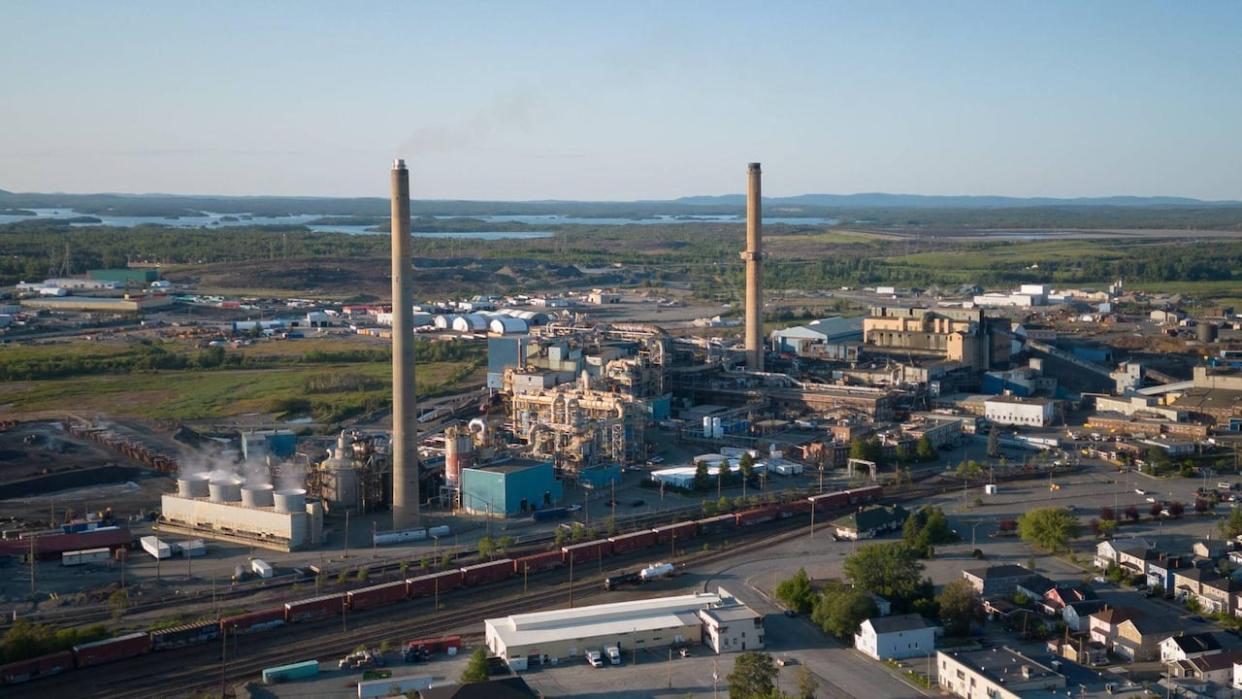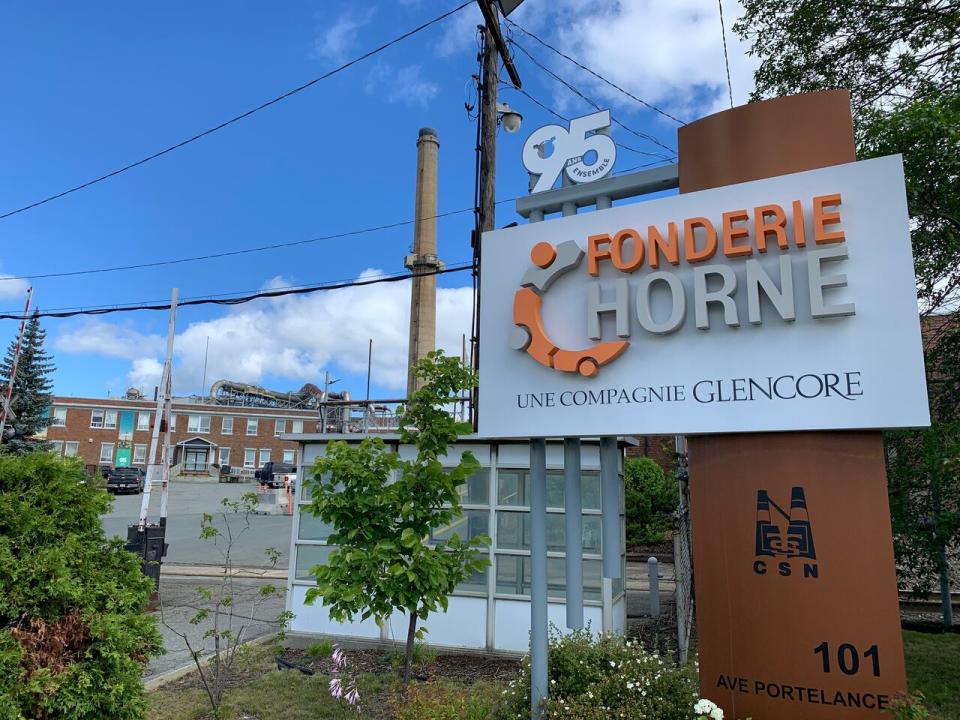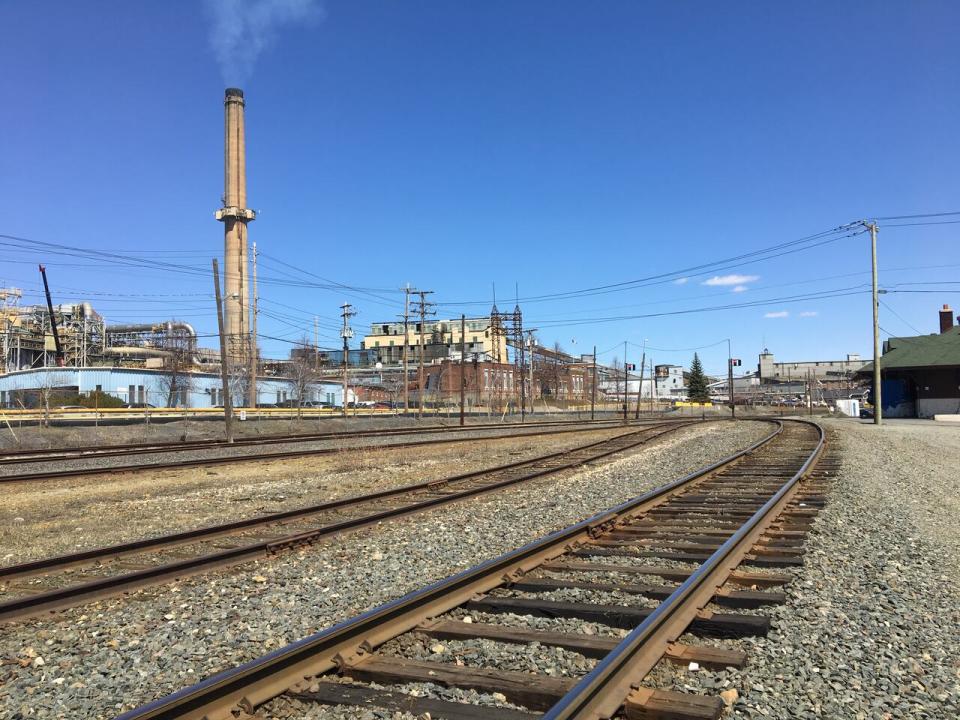Horne Smelter decreases arsenic emissions as it inches toward Quebec benchmark

Canada's only copper smelter says it's making progress toward reducing arsenic emissions in the northwestern Quebec city that it neighbours.
The Horne Smelter, in operation since 1927 and now owned by Swiss multinational Glencore, released its report on emissions in Rouyn-Noranda, Que., for 2023 on Thursday.
It averaged 45 nanograms per cubic metre of arsenic between March 16, 2023, and March 15, 2024, down nearly 40 per cent from a year earlier.
Marie-Élise Viger, Glencore's environmental manager for North America and the Philippines, said the company put in resources to get there.
Viger said the average is calculated by monitoring the smelter every two days and compiling an average for the year.
"It's an effort that takes several years," said Viger. "We had to do a lot of sampling, a lot of modelling to really pinpoint where were the areas that contributed."

The foundry in Rouyn-Noranda owned by Switzerland-based Glencore is the only copper smelter in Canada. (Jean-Michel Cotnoir/Radio-Canada)
She says the engineering team developed equipment to filter the emissions and installed four new dust filters on their vents.
"It's a great accomplishment and it shows all the effort," said Viger.
Smelter's figures don't paint full picture, says advocate
The arsenic emissions were measured in four locations around town. But Nicole Desgagnés says without more detailed figures, it's difficult to know if emissions have declined equally across the territory.
Spokesperson for ARET, a French acronym that stands for stopping toxic emissions, she says Glencore isn't giving the full picture of the situation because their data doesn't take into account samples taken at provincial stations.
Desgagnés says some of those stations showed higher concentrations than what Glencore presented.
"There's a way of presenting things that's positive for the foundry," said Desgagnés.
"When you go and look for other information, there are bits and pieces where they're not giving a truthful picture."
While Desgagnés says progress on reducing emissions is positive, she says there's still a long way to go and that they are still subject to a "cocktail of dangerous metals."
The foundry says about 99 per cent of the urban area of Rouyn-Noranda has emissions of 15 ng/m³ or below.
Quebec's provincial norm for arsenic emissions is an annual average of three ng/m³.
In 2021, the smelter was permitted to emit a maximum of 100 ng/m³ of arsenic into the air, or 33 times the Quebec standard.

Rouyn-Noranda was built around the Horne Smelter. (Catou Mackinnon/CBC)
Glencore said it would meet a 15-nanogram target by 2027, as requested by Environment Minister Benoit Charette in 2022, by which time a plan must also be presented to reach the provincial norm.
According to the smelter's projections, once their project, titled Aeris, is up and running, about 84 per cent of Rouyn-Noranda's urban perimeter should be at or below three ng/m³.
Aeris, a project valued between $500 and $750 million, is part of the Horne Smelter's plan to reduce emissions.
On Monday, the smelter announced the modernization project was moving into the feasibility phase. Once the feasibility study has been completed, it said project should receive final approval by the end of 2024.


